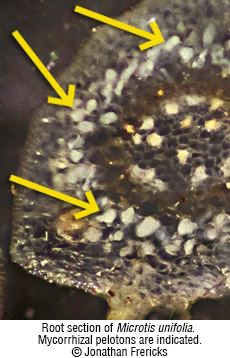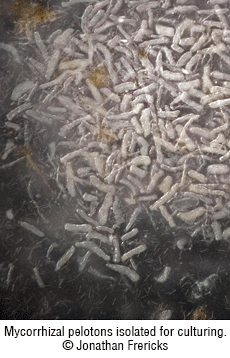<< BACK TO PROJECT LIST
Project: 287/2012
Title: Orchid Conservation across the Tasman: First steps in understanding orchid mycorrhizal associations in New Zealand.
Applicant: Jonathan Frericks
Institution: Victoria University of Wellington, Te Papa Tongarewa, Otari Wilton’s Bush.
There are several genera and species of terrestrial orchids shared by Australia and New Zealand (NZ). These may represent vagrant distributions of Australian species that dispersed to NZ or they may be distinct species endemic to NZ. Species of the genus Spiranthes (e.g. S. australis and S. novae-zealandiae), Chiloglottis and Microtis are some examples. It is known that terrestrial orchids rely on fungal endosymbionts for seed germination and nutrition; however, whether these new arrivals share the same endomocorrhyzae as their Australian counterpart is not known.
As part of my research project I will investigate phylogenetic affinities of a select number of NZ orchids with their Australian counterparts. The identity of their endomycorrhizae and the extent of specificity will also be analysed by extracting and culturing fungal isolates for DNA extraction and sequencing. An ex situ germination assay with inoculated seeds of two species will be used to determine germination specificity. An in situ seed baiting experiment will be set up at Otari-Wilton’s Bush, Wellington, to identify whether patterns of viable symbiosis sites exist around established plants.
Funding from the Australian Orchid Foundation will be used to visit the Biodiversity Conservation Centre at King’s Park Botanic Gardens in Perth and gain training in well-established orchid mycorrhizal techniques. These techniques have never been used in NZ orchids and it is important for the conservation of NZ terrestrial orchids that these methods are disseminated among NZ orchid scientists.
This project will provide insights to NZ orchid and mycorrhizae specificity and biogeography. Furthermore, it provides an important contribution to the conservation of NZ terrestrial orchids, almost one third of which are listed as at risk or worse.



Project Outcomes:
Endophytic fungal diversity cultured from Chiloglottis valida, Microtis unifolia, Pterostylis banksii, Spiranthes novae-zelandiae and Thelymitra longifolia were identified as members of the phyla Ascomycota, Basidiomycota, and Zygomycota, using ITS gene markers.
Seeds of M. unifolia, P. banksii, S. novae-zelandiae and T. longifolia inoculated with cultured conspecific endophytes showed variability in their effects. Five inoculants exhibited a positive response and three inoculants had a consistent negative effect on seed germination. Tulasnella calospora promoted germination of S. novae-zelandiae and germination began within 30 days from inoculation. Chlorophyllous tissue was observed c. 80 days after inoculation.
In situ germination experiments found germination rates of M. unifolia and T. longifolia were higher at uncultivated sites. Tulasnella calospora assists in germination of M. unifolia at Otari-Wilton’s Bush, Wellington.
Seed viability was considerably reduced after five months in the soil, suggesting that seeds do not persist in the seed bank beyond one growing season.
Phylogenetic analyses of Asian-Pacific Spiranthes species suggested support for the recognition of Spiranthes novae-zelandiae ‘Motutangi’ as a distinct taxonomic unit using nuclear (ITS) and chloroplast (trnL-trnF) markers.
